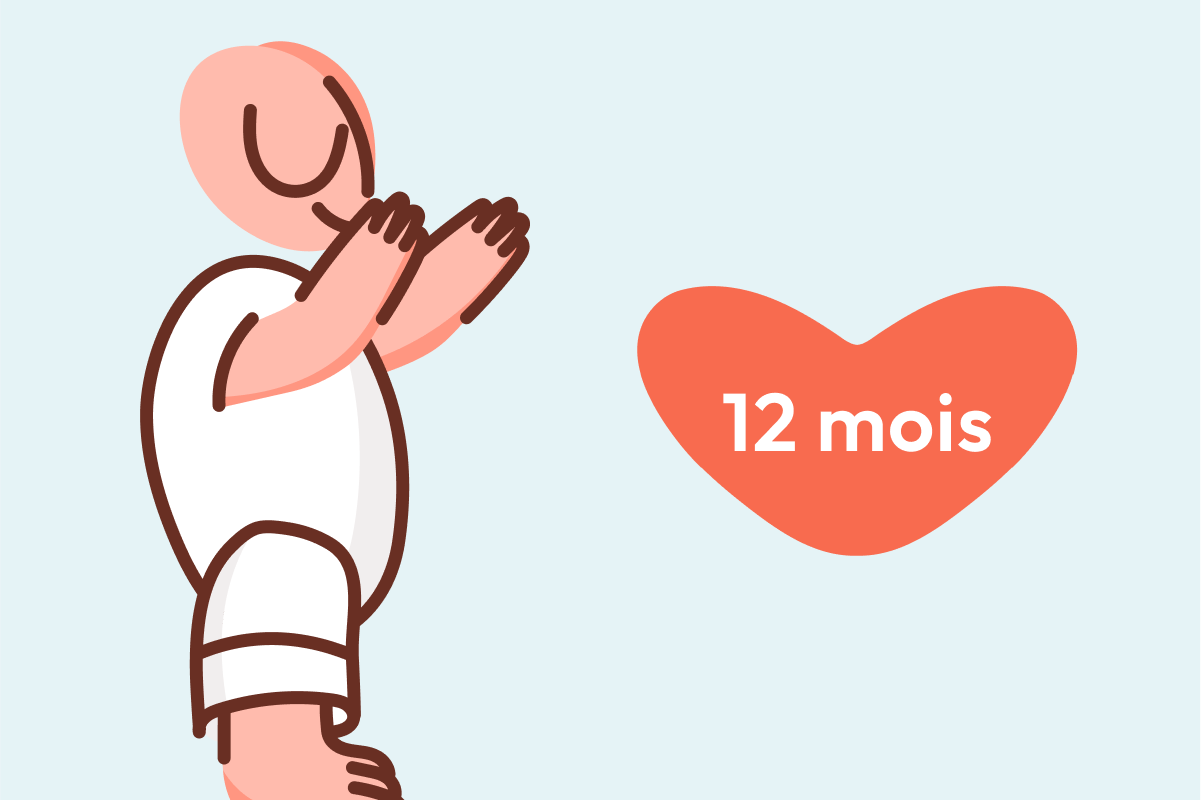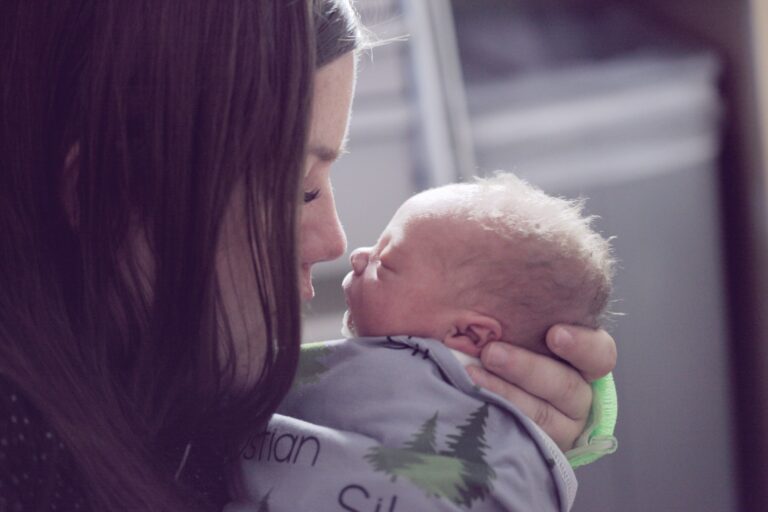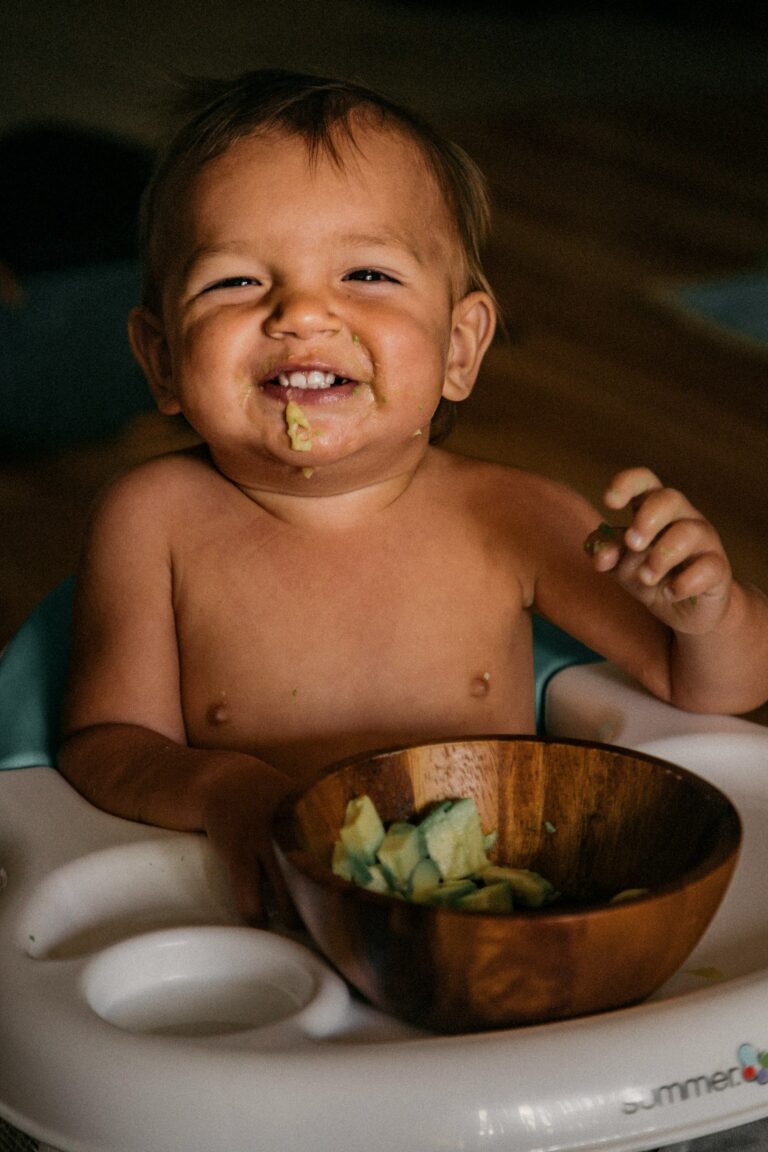The first birthday; an occasion brimming with wonder, pride, and not a touch of bewilderment. Suddenly, your child is standing (sometimes not quite, sometimes already running circles), setting off on tiny adventures with eager steps or a determined crawl; the border between baby and toddler feels both close and far. Daily you witness bursts of independence—if not at mealtime, then certainly when your mobile explorer asserts preferences, reaches for your hand, or turns pages in a sturdy board book with focused intensity. The stage of baby 12 months can leave parents with an avalanche of questions: “Should my child be walking now?” “How much milk is enough?” “Why does he refuse his favourite food all of a sudden?” and, more importantly, “Is all this normal?” From physical leaps to emotional ripples, from the mysterious world of nutrition to the puzzle of sleep, new discoveries emerge almost every day. While you juggle milestones, surprising regressions, and that ever-pressing call for safety, there’s both reassurance and challenge in the journey. Let’s dive deep: expect precise advice, medical clarity, and empathetic answers to your most persistent doubts.
Transitioning from Infant to Toddler: Newfound Independence and Emotional Growth
One day your little one is clinging to your finger, the next attempting solo missions across the living room floor. At this milestone, baby 12 months represents both an explosion in gross motor skills and a nuanced shift in emotions. Walking might just be a few wobbly steps or a distant milestone (anywhere between 10 and 18 months can be perfectly typical), while crawling and cruising around furniture are equally valid modes of exploration. The fascination with pressing buttons, opening drawers, and investigating every corner can be relentless—questions like “What’s inside that cupboard?” dominate the day.
But there’s another side: rapid bursts of boldness fade just as quickly to moments of clinginess or loud protest when you step out of sight. Separation anxiety might now peak, manifesting as intense attachment to you or another primary caregiver. This is less regression than a sign of healthy emotional security flourishing alongside curiosity.
Recognising these swings can help: is your child darting away, laughing, only to pivot and rush back for a comforting touch? That push-pull is simply the foundation for growing self-confidence, a delicate dance between autonomy and the enduring need for reassurance.
Physical Development: Growth Patterns, Motor Skills, and Teething
The numbers may appear simple: baby 12 months usually weighs about three times their birth weight and measures between 71 and 81 cm (28–32 inches), with head and chest circumference generally close. Yet, each graph, every data point, is just a cue—there’s no universal script. Height spurts might slow, while the addition of teeth can be unpredictable: at this stage, between 1 and 8 primary (also called deciduous teeth) may have erupted, with teething sometimes making its presence known through disturbed sleep or a new fascination with biting.
Motor skills, both gross and fine, take centre stage. Perhaps your child is pulling to stand, shuffling along sofas, balancing with increasing sureness, or still perfecting the art of crawling—some will walk at 10 months, others at 18. Such variety is normal and healthy. Meanwhile, watch as fine motor mastery unfolds: the pincer grasp (thumb and forefinger pinch), block stacking, page turning (often several at once), and the irresistible urge to drop objects, just to see where they land. All these are signs of maturing hand-eye coordination and spatial problem-solving.
While each child’s rhythm is unique, certain safety nets remain universal: secure furniture, gate stairs, cover electrical outlets, store coins and batteries far from reach. Childproofing is not just advice, but a day-to-day necessity for a naturally adventurous age.
Cognitive and Sensory Development: Exploration and Early Problem-Solving
Envision your baby, meticulously (but playfully) removing blocks from a box, then giggling as they stuff them back in: this is object permanence in action—a realisation that toys, and even people, continue to exist out of sight. Suddenly, games like peekaboo become not only endlessly entertaining, but a vital training ground for abstract thought.
Symbolic play (pretending to drink from a toy cup, “brushing” a doll’s hair) now appears, heralding robust leaps in imagination. The urge to imitate adults—whether banging on a pot, waving goodbye, or producing a cheerful babble—signals burgeoning communication. Simple instructions (“Give the ball to daddy!”) start to make sense.
Curiosity seems infinite. Give your baby 12 months a new material—soft wool, bumpy plastic; a rattle with a clashing clang—and you’ll witness careful examination, poking, squeezing, and, eventually, shaking. Sensory play supports the development of all neural pathways; textures, sounds, and vivid colours ignite their drive to investigate. Medical research shows that repeated multisensory experiences help consolidate both memory and motor learning.
Recognition skills become ever more astonishing. Responding to one’s own name, seeking familiar toys, and recognising faces (sometimes with a burst of excitement, sometimes with shyness) form the early roots of social connection and attachment.
Language, Social, and Emotional Development
At the threshold of one year, speech hovers between sound and sense. Baby 12 months is likely to say 1–3 words, often those with high emotional resonance (“mama,” “dada,” “nana” for food, or a beloved toy’s name). Waving, pointing, head-shaking, and repeating syllables—complex babbling—define expressive gestures. Understanding of single words and repeated instructions unfolds rapidly; suddenly, you realise your little one knows much more than they can articulate.
Interaction is more than talking; it’s a two-way street. Narrate your routines, give names to daily objects, use picture books for shared pointing, sing, play clapping games—each offers a scaffold for growing vocabulary. The value of repetition and ritual in child development cannot be overstated; consistent exposure and gentle correction shape both comprehension and confidence.
Emotionally, separation anxiety may intensify. Comfort objects—like a worn blanket or beloved stuffed animal—help self-soothe. The need for recognizable routines is strong. When your child clings at drop-off or weeps at bedtime, naming their feelings (“You’re missing papa, aren’t you?”) can help build early, healthy emotional recognition and self-regulation skills.
Early play with peers is often parallel, not interactive: your child may watch another, play nearby, mimic, but not yet collaborate. Social games—rolling a ball back and forth, peekaboo, singing nursery rhymes—introduce the idea of turn-taking in gentle, age-appropriate ways.
Nutrition and Feeding: Transitioning to Family Foods
Milk remains a major player at baby 12 months—now whole cow’s milk can usually replace formula or breast milk (unless your healthcare provider suggests otherwise), aiming for about 16–24 ounces (roughly 500–700 ml) daily. Gradually, bottles give way to cups, directly benefiting dental health and the development of oral muscles.
Diet now broadens to “table food,” yet, while your toddler might devour dal-rice with fingers one day, they may throw it across the room the next. Encourage self-feeding with small, soft finger foods—boiled vegetables, bite-sized bread, soft fruit, well-cooked meats or legumes—and introduce a spoon, letting messiness reign.
Medical recommendations urge caution with choking hazards: whole grapes, hard nuts, round candies, popped corn, and pieces of tough meat are best delayed. Continuous supervision during meals is indispensable.
A typical day’s plan? Offer small portions with varied textures—mashed carrots, cooked spinach, diced roti, steamed fish or paneer. Limit added salt and sugar. Water should be freely available, milk should never be the main thirst-quencher after meals, and fruit juice (if given) should be kept to less than 120 ml a day, prioritising fresh fruit for fibre and hydration.
Picky eating—sometimes a mild frustration, sometimes a battle of wills—is almost a rite of passage. The best response? Patience. Never pressure; instead, offer without expectation and model eating a wide selection. Acceptance may take ten or more presentations. Family mealtimes support not only nutrition but social learning, language, and emerging independence.
Sleep Patterns and Healthy Sleep Habits
If sleep with a baby 12 months sometimes feels elusive, science can explain why: between developmental leaps, teething, and increased mobility, the so-called sleep regression of this age is well-documented. Babies need about 11–14 hours of sleep in 24 hours, usually split between a consolidated night stretch and one or two daytime naps. Some children begin the shift from two naps to one in this window.
Bedtime rituals—warm baths, bedtime stories, soft music—create reliable signals. Resistance to naps or night waking may intensify; soothing, predictable responses help. Allowing short periods for your child to self-settle (with comforting presence nearby) can gradually ease the transition to independent sleep. If separation anxiety disrupts bedtime, keep reactions gentle but consistent, reassuring your child of your return.
Health, Safety, and Preventive Care
The first birthday often coincides with the next scheduled health check-up, during which your healthcare provider will measure height, weight, head circumference, and developmental achievements (standing with support, babbling, using gestures). Immunisations begin a new set: measles, mumps, rubella (MMR), hepatitis A, varicella, and sometimes meningococcal, following local guidelines and individual medical history.
Dental hygiene becomes pressing as teeth erupt: start brushing daily with a smear of fluoride toothpaste, and consider the first dental visit during this year. Bottle-weaning is medically recommended to prevent “bottle caries,” a form of early childhood tooth decay.
Parents must remain vigilant for red flags: persistent fever, unusual rashes, repeated respiratory symptoms like wheezing or cough, or failure to attain previous milestones. If your baby 12 months is not crawling, babbling, showing gestures, or standing with support, or if skills seem to disappear, seek early assessment—a proactive approach allows timely intervention. Always remember, premature babies may progress according to their adjusted age.
At this stage, household babyproofing becomes a necessity:
- Install child locks on cabinets with cleaning agents or medications,
- Block stairs and balconies with gates,
- Cover wall sockets,
- Secure or anchor heavy furniture,
- Store small objects high and out of sight,
- Pad sharp corners.
Burns, choking, poisoning, and falls are the leading home accident risks—constant supervision during meals or baths, careful water heater temperature adjustment, and secure storage of all chemicals or medicines must become part of your new routines. Rear-facing car seats properly installed are non-negotiable for outings, while barefoot exploration indoors strengthens foot development.
Play, Learning, and Daily Structure
What fuels the mind of your baby 12 months most? Predictable routines paired with bursts of innovative play. Early mornings are often best for physically active games—crawling, pushing pull-toys—while post-nap hours lend themselves to the colourful calm of picture books or stacking blocks.
Choose toys that foster both gross and fine motor growth: blocks, simple puzzles, busy boards, soft balls, but also cause-and-effect games like “drop and return.” Sensory baskets filled with fabrics, textured balls, and musical toys invite tactile and auditory exploration. Music (think nursery rhymes and upbeat rhythms) aids language and emotional expression, while your encouragement of trying and persevering instills resilience.
Allowing your child choices—between two toys or which shirt to wear—boosts initiative. Observe, narrate (“You picked the blue ball!”), and let your child repeat, experiment, and—even if mess results—learn.
Delicate boundaries secure emotional safety—lovingly reinforced routines and familiar “transition objects” (comfort blankets, favourite toys) can help adapt to change, from visitors to new surroundings.
Encouraging Autonomy, Celebrating Progress
Tiny hands, clumsy perhaps but oh so determined, reach for spoons, books, even socks, eager to participate in everyday rituals. Whether tidying up toys, picking between snacks, or trying to dress, each act of inclusion builds self-confidence for your baby 12 months.
Healthy risk is not rashness: it’s the gentle invitation to try, stumble, and try again, under your watchful eye. Name emotions (“You seem frustrated with that spoon!”), let your child problem-solve, introduce novel foods, and explore new places at a comfortable pace.
Supporting Parents: Daily Challenges and Wellbeing
Feeding refusals, naps cut short, bursts of temper—these are not failings, but signs of emerging will. Offer variety, not pressure—medical research reveals that exposure to a wide range of foods and calm mealtimes pay dividends long-term.
Mark the first birthday with intention: keep it simple, matching celebration to your child’s rhythms, surrounded by warmth, familiar faces, perhaps a low-sugar homemade cake. Document memories, not perfection—what counts are the laughs, smiles, and tiny triumphs.
Mind your own wellbeing too. Shared tasks, scheduled breaks, and attention to posture (especially during feeding or carrying) benefit everyone.
If concerns arise, trust your instincts—bring any questions about growth, sleep, or emotional development to your paediatrician at the 12-month checkup. Early questions lead to the best outcomes.
Key Takeaways
- Baby 12 months signals not only physical growth but waves of independence, emotional connection, and unpredictable daily challenges.
- Security is built through steady routines, diverse nutrition, responsive communication, and enriched play.
- Medical understanding of developmental milestones gives reassurance and enables timely support.
- Home safety (childproofing, oversight at mealtimes, emergency planning) is a continuous necessity for your rapidly exploring child.
- Parents benefit from both information and support; resources and professionals can help you navigate each stage.
- For personalised health tips and free child health assessment tools, download the application Heloa.
Questions Parents Ask
What vaccinations are needed for a 12-month-old?
The routine immunisation schedule at baby 12 months typically includes MMR (measles-mumps-rubella), varicella (chickenpox), hepatitis A, and sometimes meningococcal or pneumococcal vaccines, depending on medical guidelines and your child’s previous vaccinations. If you have questions about side effects or the timing of appointments, your paediatrician will explain and guide you through each step.
How can language skills be supported at this age?
Talking frequently, describing activities, and using names for objects or people all help develop language comprehension. Reading picture books, clapping to rhymes, and playing pointing games provide enjoyable opportunities for word learning. Children progress at their own pace—exposure and encouragement foster confidence in expressing themselves.
Is it normal if my 12-month-old refuses to eat certain foods?
Selective eating is commonplace. Babies assert preferences as part of their developmental journey. The best approach is to keep presenting a wide variety of healthy options without pressure. Family meals, modelled eating, and calm repetition usually encourage broader acceptance over time. If worries about nutrition persist, do consult your health provider.
Further reading:









